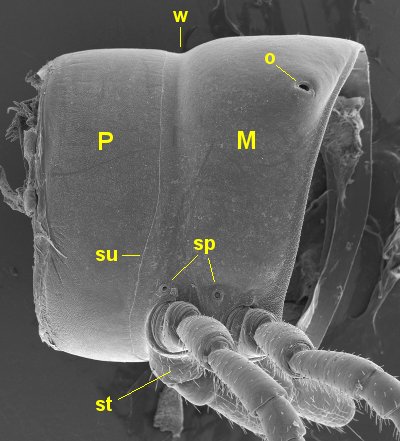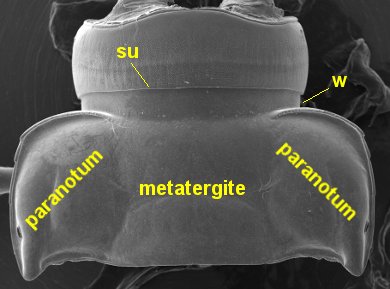Back to: haplosegments
Forward to: paranota
Diplosegments
The structure of the diplosegments is normally hidden. In both living and preserved Polydesmida, the diplosegments 'telescope' into one another (image at right). This makes it difficult to see clearly just how they are built and how they are connected. |
 |

Lissodesmus perporosus (Dalodesmidae), Tasmania. This specimen has been treated with 80% lactic acid to dissolve away all soft tissue, and the gut has been removed. What remains (the exoskeleton) shows the trunk as a thin-walled tube with thickened sections, in this case the diplosegment rings.
The image at right gives a left ventrolateral view of a midbody ring. The ring is made up of a smaller-diameter, anterior prozonite (P) and a larger-diameter, posterior metazonite (M). There is usually a constriction or waist (w) where they meet. |
 |
|
Noteremus summus |
 |
 |
Orthorhachis jubata (Dalodesmidae) |
Unidentified polydesmidan |
Whether or not a diplosegment has the lateral extensions called paranota, the top of the metazonite is called the metatergite (image above, left). The metatergite is sculptured in many Polydesmida and often has transverse rows of setae. In some Polydesmida there is a transverse furrow (a shallow groove) on the metatergite. A furrow can be seen on each of the metatergites in the image above, right.
Back to: haplosegments
Forward to: paranota
